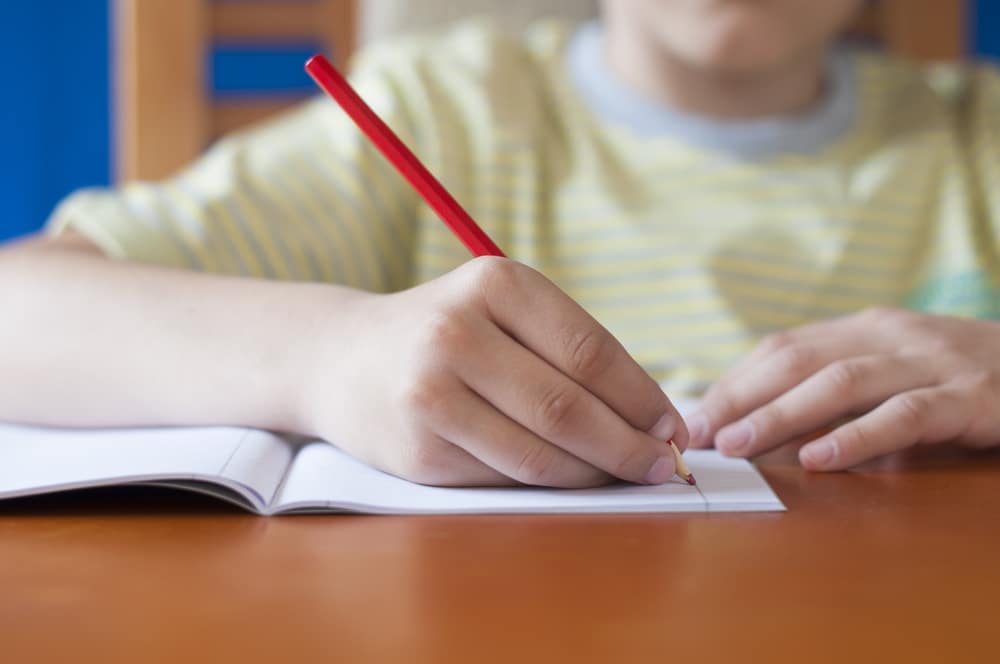Teaching young children to write starts when they pick up a crayon to color. Crayons are usually thicker than pencils and easier for little ones to grip. Coloring is actually a great way to introduce handling a writing tool because it helps little muscles get the exercise to prepare them for more.

Teach Your Kids to Write Letters
Notice which hand they use to grip, so when it is time to write letters you will know which hand is dominant for them. Many children are ambidextrous and that is ok too because the child’s brain has an amazing ability to alter its synapses easily.
Before your child begins to write letters, have them create simple lines and shapes like a circle or square. Have them copy lines and curves or anything they enjoy drawing or coloring. Gently encourage them to hold the crayon or pencil correctly so they don’t get into a bad habit of holding in incorrectly.
Do this by showing them how to rest the pencil between their thumb and index finger for the best pressure and ease of writing. Praise them for doing well and even making an effort because it’s difficult to learn a new skill. This gives them the confidence to want to continue and do better.
As an alternative, you can find a good letter sample at WritingUniverse free database, and write it down. It will serve as a great example for your child and will show that you are also involved in the process.
These types of exercises will strengthen the muscles in their hands so they will be able to control the pencil with ease. Those muscle skills, or fine motor skills, are a very important precursor to writing letters.
This involves the muscles of the fingers, hand, and wrist. Some other fine motor activities are using playdough, finger painting, putting Legos together, snaps, buttons and tying shoelaces. The stronger the small muscles in the hands, the easier it is to write.
Once your child can recognize their letters visually and know the difference between similar letters like /b/ and /d/ or /p/ and /q/, they are beyond ready to begin writing the letters. If your child will later attend public school be sure to check with the school to see what type of lettering they prefer. Some Schools use the D’Nealian alphabet which is a great way to ease students from printing to cursive around the age of eight.
Start your child with their name on a 4-lined page made just for beginning printing, so they will learn the proper strokes of the letters. Model how to properly form the letters from top to bottom. Don’t let them get in the habit of doing it bottom to top. You can put your hand over their hand to guide them at first until they get the hang of it. They can trace the letters of their name until they can write it on their own.
This is very exciting when they finally write their name all by themselves. Just like writing their name, they can trace the letters on pre-made worksheets until they master writing them as well. Learn one or two letters a week if they are showing progress. There are even letter-writing apps on the tablet that will not let them form a letter backward or upside down.
If they haven’t already learned the sounds of each letter they can also practice the sound when writing the letter and soon write small words like /Mom/Dad/cat/dog/. Before long they will be writing full sentences and you will wonder where the time has gone.
